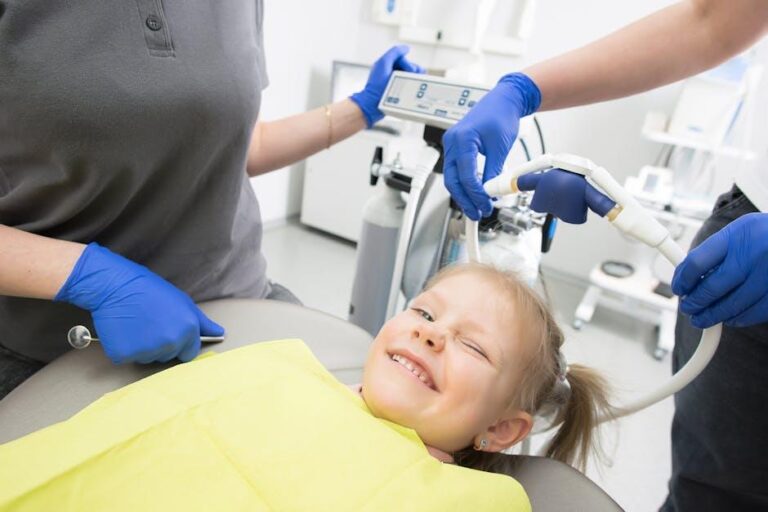1 in 3 Kids Has Dental Problems, Poll Finds – U.S. News & World Report
According to a shocking new poll reported by U.S. News & World Report, about one in three children in the United States suffers from dental problems. This revelation underscores urgent concerns regarding pediatric oral health and the increasing need for better preventive care and education. Dental issues in children can have profound effects — from pain and infection to complications in speech and nutrition — making early identification and treatment essential.
Understanding the Poll: Key Findings on Kids’ Dental Health
The poll, conducted nationwide among caregivers and pediatric dentists, revealed that 33% of children under the age of 12 have experienced some form of dental problem. These issues range from cavities and tooth decay to more serious gum infections. Here are some detailed insights from the poll:
| Dental Problem | Percentage of Affected Children | Common Age Group |
|---|---|---|
| Tooth Decay (Cavities) | 22% | 5-10 years |
| Gum Disease (Gingivitis) | 7% | 8-12 years |
| Tooth Sensitivity | 5% | 6-11 years |
| Other Dental Problems | 6% | Varied |
These statistics signal a broader public health concern about the oral hygiene habits and access to dental care that children receive nationwide.
Why Are So Many Children Experiencing Dental Problems?
Common Causes of Pediatric Dental Issues
Understanding why dental problems occur among children can help parents and caregivers take effective preventive measures. Some of the most common causes include:
- Poor Oral Hygiene: Inadequate brushing and flossing habits lead to plaque buildup and cavities.
- High Sugar Diets: Frequent consumption of sugary snacks and drinks increases risk for tooth decay.
- Lack of Regular Dental Visits: Missing routine dental checkups can delay diagnosis and treatment.
- Limited Access to Dental Care: Socioeconomic factors can restrict access to preventive and restorative dental services.
- Genetics: Some children may inherit dental traits that predispose them to cavities and enamel weakness.
The Role of Socioeconomic Factors
The poll also highlighted disparities in dental health based on income and location. Children in low-income families or rural areas are disproportionately affected, often due to lack of affordable dental care or fluoridated water. This gap emphasizes the need for public health interventions targeting vulnerable populations.
Why Pediatric Dental Health Matters: The Long-Term Impact
Dental problems in childhood do more than cause immediate discomfort — they can lead to:
- Speech Development Issues: Poor dental health may interfere with proper speech formation.
- Chronic Pain and Infection: Untreated cavities or gum infections can result in ongoing pain and severe infections.
- Difficulty Eating and Nutrition Deficiencies: Painful teeth can limit a child’s ability to chew properly, affecting nutrition.
- Self-esteem and Social Challenges: Visible dental problems can impact confidence and social interactions during formative years.
Practical Tips for Parents: Preventing Dental Problems in Kids
Taking preventative steps can drastically reduce the risk of dental problems for children. Below are expert-recommended tips for maintaining optimal pediatric oral health:
Daily Oral Hygiene Routine
- Brush teeth twice a day with a fluoride toothpaste.
- Supervise brushing for children under 8 to ensure proper technique.
- Introduce flossing as soon as your child has two teeth that touch.
Diet and Nutrition
- Limit sugary snacks, desserts, and drinks.
- Encourage healthy snacks like fruits, vegetables, and cheese.
- Offer water regularly, preferably fluoridated tap water if available.
Regular Dental Checkups
- Schedule first dental visit by the child’s first birthday.
- Maintain six-monthly dental appointments for cleanings and checkups.
- Discuss sealants and fluoride treatments with your dentist to prevent cavities.
Promoting Good Habits
- Make brushing and flossing fun with praise, music, or rewards.
- Model good oral health habits for your child.
- Educate older children on the importance of dental care for lifelong health.
Case Study: A Mother’s Journey to Overcoming Her Child’s Dental Problems
Jessica, a mother of two, shares her experience battling early tooth decay with her youngest son, Liam:
“When Liam was six, he complained a lot about tooth pain. At first, I thought it was a regular phase, but a dental checkup showed several cavities. We changed our entire routine — no more sugary juice boxes, and we made brushing a fun game every morning and night. After a few months, his teeth improved and pain disappeared. Now, he even reminds me when it’s time to brush!”
Jessica’s story is a hopeful reminder that dental issues can be managed and prevented with consistent care and parental involvement.
Expert Opinion: What Pediatric Dentists Recommend
Dr. Amanda Lee, a leading pediatric dentist in New York City, emphasizes:
“The statistic that one in three kids has dental problems should be a wake-up call. Oral health is not just about avoiding cavities; it’s integral to children’s overall well-being. Parents must start oral care early, keep up with routine dental visits, and encourage healthy lifestyles at home.”
Conclusion: Taking Action to Protect Your Child’s Smile
The recent poll from U.S. News & World Report revealing that 1 in 3 children suffers from dental problems is a concerning indicator of the current state of pediatric oral health in America. As a parent or caregiver, vigilance and proactive care can go a long way in preventing many common dental issues. By prioritizing daily oral hygiene, nutritious diets, and regular dental checkups, you can help ensure your child’s beautiful smile stays healthy for years to come.
Remember: Early prevention is the best protection against dental problems. Start healthy habits today and set your child up for a lifetime of confident, pain-free smiles.


